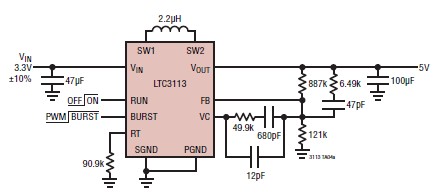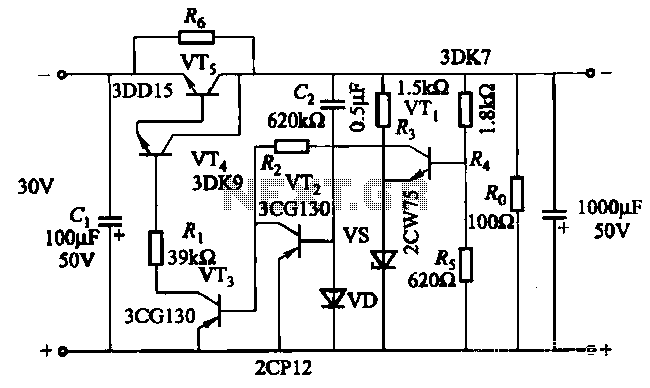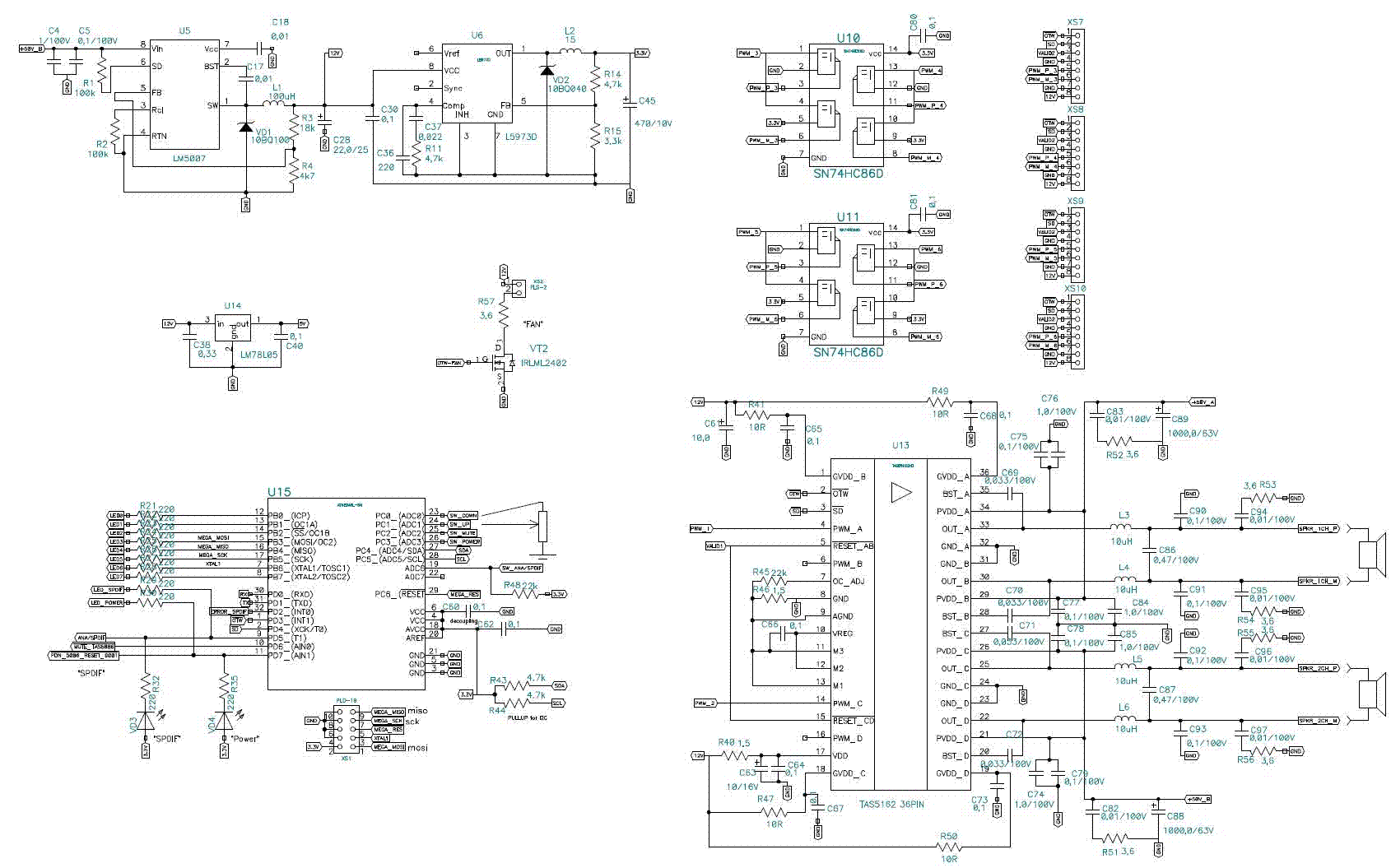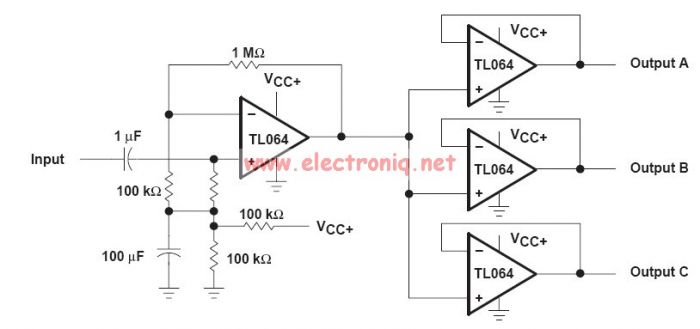
Audio limiter circuit schematic
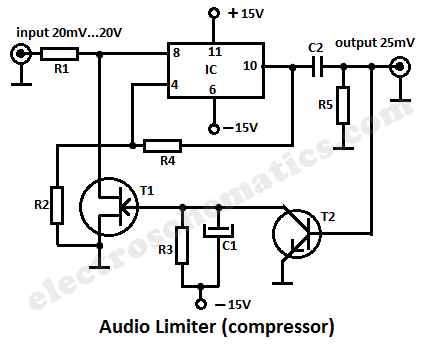
This audio limiter circuit is simple to construct and is compatible with BA741 operational amplifiers, whether in 8-pin or 4-pin configurations. It requires a symmetrical power supply. The circuit is designed to manage audio input levels effectively.
The audio limiter circuit functions to prevent audio signals from exceeding a predetermined threshold, thereby protecting downstream audio equipment from distortion or damage caused by excessive signal levels. The use of the BA741 operational amplifier allows for reliable signal processing due to its low noise and high gain characteristics.
The circuit typically includes a feedback loop that regulates the output level based on the input signal. When the audio input level rises above the set threshold, the circuit automatically reduces the gain, ensuring that the output remains within a safe range.
In constructing this circuit, attention must be paid to the power supply configuration. A symmetrical power supply is essential for the proper operation of the BA741, which typically requires both positive and negative voltage rails to function effectively.
The layout of the circuit should minimize the length of signal paths to reduce noise and maintain signal integrity. Capacitors may be used at the input and output stages to filter out any unwanted high-frequency noise, improving the overall performance of the limiter.
Additionally, it is important to select appropriate resistor values to set the desired threshold level and gain. The use of variable resistors can provide flexibility in adjusting these parameters according to specific application needs.
Overall, this audio limiter circuit is a valuable tool for audio engineers and hobbyists alike, providing a straightforward solution for managing audio levels in various applications.This audio limiter circuit is easy to build, works with BA741 8pins or 4pins so pay attention and uses a symmetrical power supply. When the audio input lev. 🔗 External reference
The audio limiter circuit functions to prevent audio signals from exceeding a predetermined threshold, thereby protecting downstream audio equipment from distortion or damage caused by excessive signal levels. The use of the BA741 operational amplifier allows for reliable signal processing due to its low noise and high gain characteristics.
The circuit typically includes a feedback loop that regulates the output level based on the input signal. When the audio input level rises above the set threshold, the circuit automatically reduces the gain, ensuring that the output remains within a safe range.
In constructing this circuit, attention must be paid to the power supply configuration. A symmetrical power supply is essential for the proper operation of the BA741, which typically requires both positive and negative voltage rails to function effectively.
The layout of the circuit should minimize the length of signal paths to reduce noise and maintain signal integrity. Capacitors may be used at the input and output stages to filter out any unwanted high-frequency noise, improving the overall performance of the limiter.
Additionally, it is important to select appropriate resistor values to set the desired threshold level and gain. The use of variable resistors can provide flexibility in adjusting these parameters according to specific application needs.
Overall, this audio limiter circuit is a valuable tool for audio engineers and hobbyists alike, providing a straightforward solution for managing audio levels in various applications.This audio limiter circuit is easy to build, works with BA741 8pins or 4pins so pay attention and uses a symmetrical power supply. When the audio input lev. 🔗 External reference
